Marzuelos: squirrel mushroom
3 years ago · Updated 6 months ago
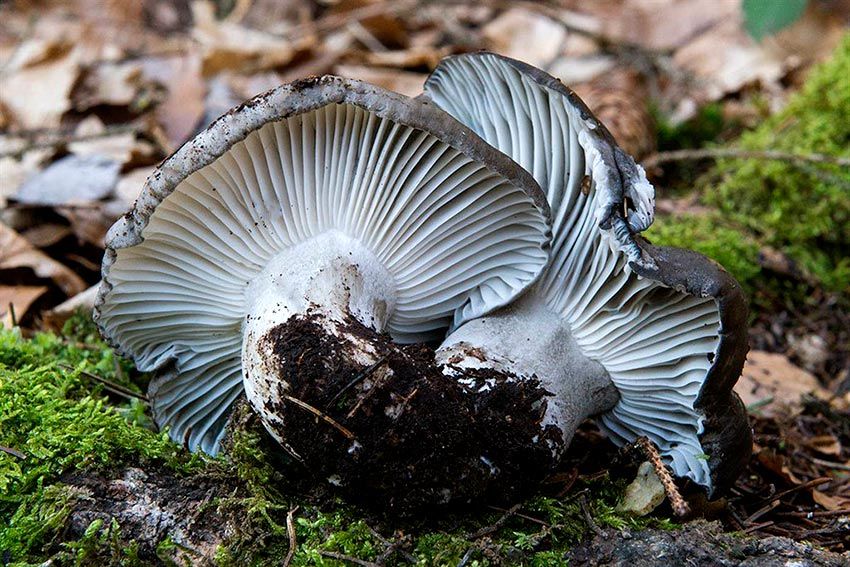
- This species is undoubtedly the most sought-after mushroom of all
- When will the marzuolos come out?
- Hygrophorus marzuolus, a little-known mushroom... for now
- Traditional names of the March mushroom
- Tips for finding marzuelos and interesting facts about the Hygrophorus marzuolus
- What do morels look like? How can you recognize them?
- Where can you find morels?
- What is the habitat of the marzuelo?
- Photographs of marzuolos
- Marzuolo in the kitchen
This species is undoubtedly the most sought-after mushroom of all
It is known as the queen of camouflage because it is so difficult to find, as it tends to grow half buried among the leaves and dead leaves of the forest. In addition, it is the first to appear after winter, making it one of the great mycological treasures of the season.
Its appearance depends largely on weather conditions, particularly rain and snow in late winter and early spring. For this reason, some seasons can be more generous than others. Despite this, enthusiasts always eagerly await the moment when the mountains begin to wake up and the search for morels becomes the best excuse to go out into the forest.
When will the marzuolos come out?
The marzuolo (Hygrophorus marzuolus) is probably one of the most mysterious and sought-after edible mushrooms by enthusiasts. Its peculiarity lies in the fact that it appears outside the most usual mushroom seasons, far from the large autumn and spring harvests.
The marzuelo usually appears at the end of winter or beginning of spring, although its appearance is closely linked to weather conditions, especially the humidity left by winter rains and snows. This means that each season is different and finding them becomes quite a challenge.
In addition, it is a mushroom that grows semi-buried, often hidden under moss or leaf litter, which further increases its reputation for elusiveness and makes its collection a real prize reserved for the most observant and experienced.
If you would like to learn more about edible mushrooms, we recommend this field guide to European mushrooms
The marzuelo grows underground, so you will need a mushroom knife to help you harvest it. We recommend this special knife for porcini mushrooms with a double blade so that you can lever it out and harvest the marzuelo without damaging it.
Hygrophorus marzuolus, a little-known mushroom... for now
The lack of knowledge among many mycology enthusiasts about the squirrel mushroom is perhaps due to the time of year when it appears, just after the first snowfalls in winter. But if you've had the chance to go out and look for them, you'll know what a delight they are.
Firstly, because it is the first species we can find in the mountains, with the exception of the southern gurumelo. Secondly, because of the wonder of being able to walk in the woods at this time of year.
From late January in the earliest areas to late May in the latest areas. Thirdly, because of the complexity of locating a semi-buried marzuelo. But without a doubt, the gastronomic quality of the marzuelo means that the harvest of this winter mushroom is becoming increasingly popular and better known.
This is why it is increasingly common in February to find mushroom hunters with baskets and knives searching for the precious treasure that is the squirrel mushroom or Higrophorus marzuolus.
Traditional names of the March mushroom
Both its Latin name, Hygrophorus marzuolus, and some of its popular names are marked by the period when this mushroom appears, March. They are thus known as marceras, marzuelos, marçots (in Catalan) or Martxoko ezko (in Basque).
However, this delicious mushroom has a wide variety of popular names. As it is the first mycological species to appear after winter, it is considered a delicious food by many animals. It is therefore normal for wild boars, roe deer, deer, and squirrels to eat it. This characteristic means that the marzuelo is also known as the squirrel mushroom in many areas where it usually appears.
Tips for finding marzuelos and interesting facts about the Hygrophorus marzuolus
How long does it take for marzuelos to appear after the rains?
10 days is usually the normal period for morels to appear after the thaw begins and with temperatures between 0º and 15º. Although it is not necessary for it to snow.
With rain, humidity, and temperature, morels can extend their cycle until spring.
Where should you start looking for morels? At high or low altitudes?
Start looking at low altitudes and move to higher areas as spring progresses.
Why are morels known as squirrel mushrooms?
They are the first food in the forest after winter and animals, especially squirrels, love them.
Look for nibbled remains in the mountains. Being a white-fleshed mushroom, they are easy to spot. Where you find one, it is very likely that there are others!
Take advantage of the snowmelt to start looking for them
This spring species is usually associated with snow and especially snowmelt. Once it has grown, it tolerates snowfall well and you can find morels under the snow if you know where to look from previous harvests.
What is the habitat of the Marzuolus?
It only appears on acidic soils, preferring beech and Scots pine forests. It is loyal to the places where it grows and, if conditions are right, it will return to the same place every year.
Why is it so difficult to find?
Marzuolo is the king of camouflage and is very difficult to see. It tends to grow half buried and only a very small part of its cap is visible. Sometimes you only see a small bump sticking out of the ground!
Are there any species associated with marzuolo?
They share their habitat with Boletus Pinicola. Look for marzuolos in the same areas where you have collected this type of bolete.
Does marzuolo have an indicator mushroom?
One of the indicator mushrooms for marzuolo is Entoloma hirtipes. They grow at the same time and in the same area. If you see these mushrooms, marzuolos are nearby.
Keep an eye out for liverwort
Another sign of morels is the presence of the plant Hepatica nobilis. Its purple flowers are very easy to recognize.
If you find one, look around
Marzuelo mushrooms usually grow in large groups. If you find one, it is unlikely that there are no others nearby. Look carefully!
What do morels look like? How can you recognize them?
Morels are mushrooms considered to be excellent edible mushrooms and if we manage to harvest good-sized specimens, we can enjoy them in many dishes. But first, we need to know what the characteristics of morels are.
The cap of morels is usually between 3 and 13 cm in diameter. In young specimens, it is convex in shape, becoming flat in mature specimens. The margin ranges from curved to smooth or flat. The color of the marzuelo is also very characteristic. It changes from completely white in young specimens buried in the ground to gray tones in mature specimens and even to a dark gray, almost black, in others.
The stem of the marzuelo is fleshy. It is generally thick and short. It is white in color, turning gray with age, with gray tiger-like spots.
The gills of the March mushroom are spaced apart and thick. Decurrent. In young specimens, they are white, becoming grayish in adults.
The flesh of the March mushroom is white and tender. It has gray tones under the cuticle. It is considered an excellent edible mushroom, and for many mushroom lovers, it is one of the most delicious mushrooms they can harvest.
What is the cycle of the marzuelo?
You could say that its birth begins after 10 days of temperatures above 0º, between 0 and 12-15º throughout the day. A few snowfalls during this time do not mean that its cycle stops, as the snow also protects the soil from more extreme temperatures. This is why we often see marzuelos surrounded by snow, and even until the snow cover disappears completely, we cannot see the gray caps of these delicious mushrooms.
But then again, they're not fans of hot weather. A spell of high temperatures can interrupt the appearance of marzuelos and even stop them from flowering altogether.
Where can you find morels?
The season when this mushroom appears is unusual, as are the areas where it grows. If we are used to looking for mushrooms in the fall, logic would dictate that we should start at higher altitudes and gradually work our way down. But with morels, it's different.
Therefore, we should start looking at lower altitudes and move up as the season progresses and temperatures rise. As this is a mushroom that likes the cold, it is normal that we should also look for cold areas to find it as spring progresses. And the higher the altitude, the lower the temperature.
The best areas for looking for March mushrooms
Not all areas that produce this unique edible mushroom start at the same time. Thus, some areas in the north, Euskadi, Navarre, and the Pyrenees are usually the first regions to show the first signs of morels in late January or early February. A little later, in late February or early March, they begin to appear in abundance in other pine forests and forests on the peninsula.
The mountains of Burgos and Soria stand out. Madrid, La Rioja, Guadalajara, Cuenca, and Teruel are also lucky to see this cold-loving mushroom. In warmer areas such as Castellón, they appear a little later and also prolong their appearance until the end of May and even June in years with low temperatures.
A complicated search
Going out into the mountains with our basket and knife in search of the coveted marzuelo is no easy task. Especially if you don't know where to start looking for them. What's more, the way this mushroom grows makes it camouflage itself like no other. So, if we are lucky enough to come across a cluster of them, we can consider ourselves fortunate.
They are often found hidden under moss or snow. Only by feeling above them can we detect the presence of marzuelos. The dark gray color of their caps doesn't help to differentiate them from the color of the earth either. Another handicap for mushroom hunters!
What is the habitat of the marzuelo?
The squirrel mushroom, or marzuolo, is common in shady areas of Scots pine forests. It prefers the shelter of these trees, mainly old specimens. It can also be found in beech and other deciduous forests, oak or cork oak, and even in mixed forests of these species. It is not uncommon to find them associated with arbutus and holm oak. Care must be taken when encountering these species.
We are talking about a mycorrhizal mushroom associated with these tree species, which prefers siliceous and schistose soils. They grow more abundantly on washed and sloping slopes. A tip is to look for marzuolos in the same habitats where, in autumn, we look for chanterelles or boletes, especially B. pinicola. They share areas, especially shaded ones.
What mushrooms can we find in winter along with marzuelos?
Although we traditionally associate mushrooms with autumn or spring, in colder periods we can also find some winter mushrooms. Without a doubt, the queen is our marcera, but it is not uncommon to find other edible species alongside them.
Thus, in areas sheltered from the cold, it is not uncommon to find Cantharellus tubaeformis or lutescens, a few stray giroles (C. cibarius) or pied-de-mouton (hydnum repandum, albidum or rufescens). All are good edible mushrooms and are harvested in the usual way.
Can I confuse marzuolo with other poisonous mushrooms?
The answer is no. Due to the time of year when it appears, there is no possibility of confusion with other species. It can only be confused with another similar species. Another hygrophorus, but autumnal, Hygrophorus camarophyllus, is quite similar to its brother marzuolus but it is very unlikely to find them together. We can therefore rest assured if we find a good batch of marçots.
Photographs of marzuolos
The joy of finding a good morel site means that pickers don't hesitate to take lots of photos of morels. Images of the first higrophorus marzuolus soon appear and fill social media when the season begins. What's more, these mushrooms are extremely beautiful. Here are a few photos for you to enjoy
Marzuolo in the kitchen
The hygrophorus marzuollus is considered one of the best edible mushrooms in the fungal kingdom. It is very tasty and has a mild aroma. Furthermore, the period in which it emerges means that there are not many other species around, which increases its culinary value. Furthermore, marzuolos can reach a considerable size, even more than 12 or 13 cm. This size, combined with its fleshy consistency, makes it highly prized in mushroom cuisine.
See you soon in the mountains!

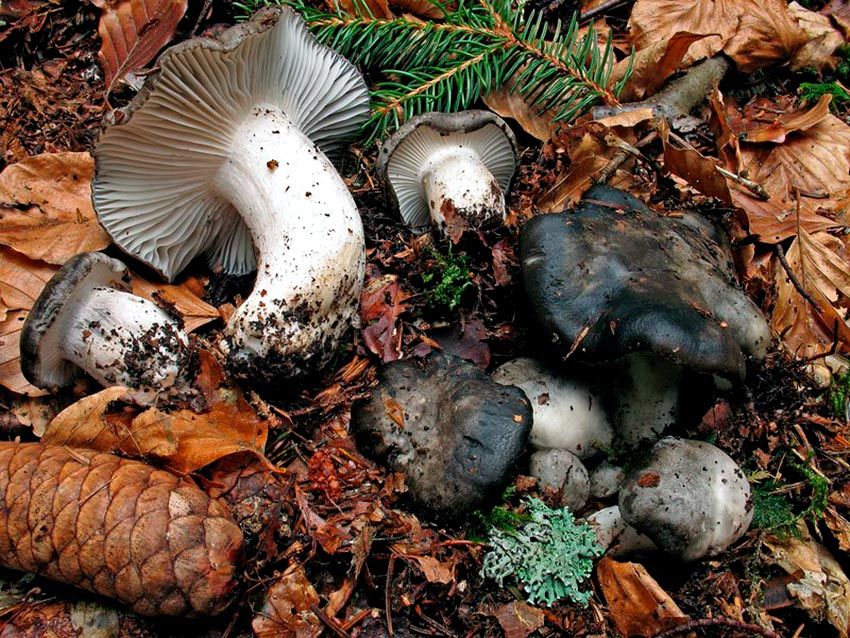
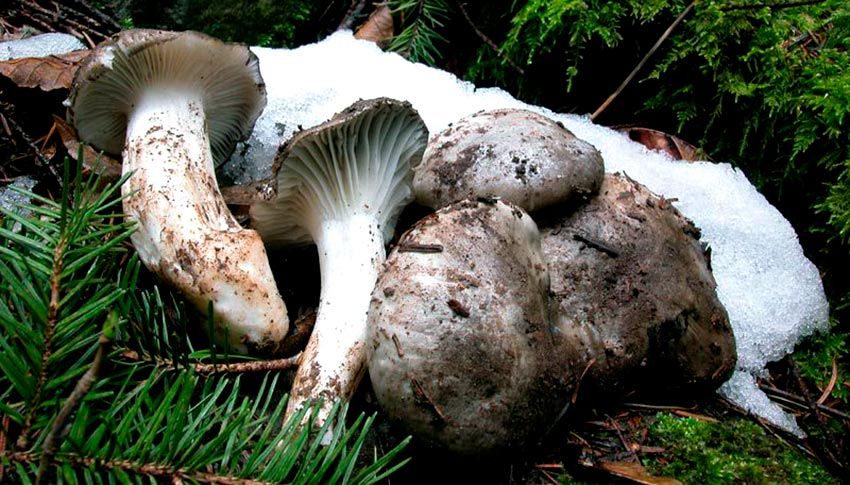
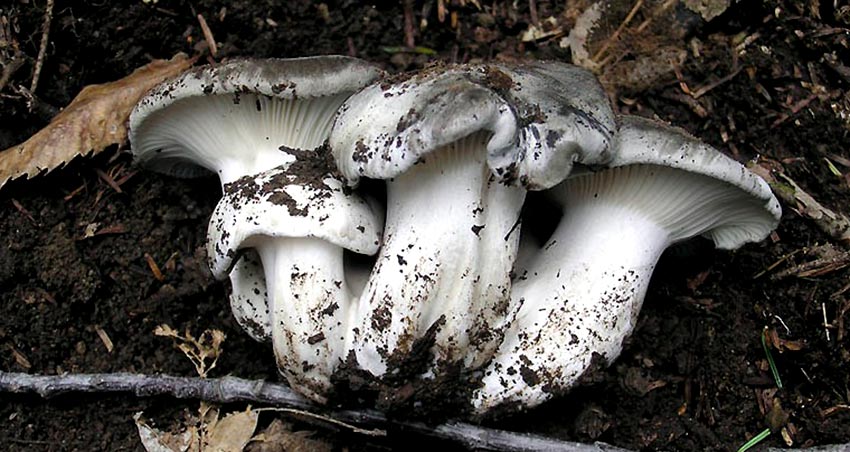


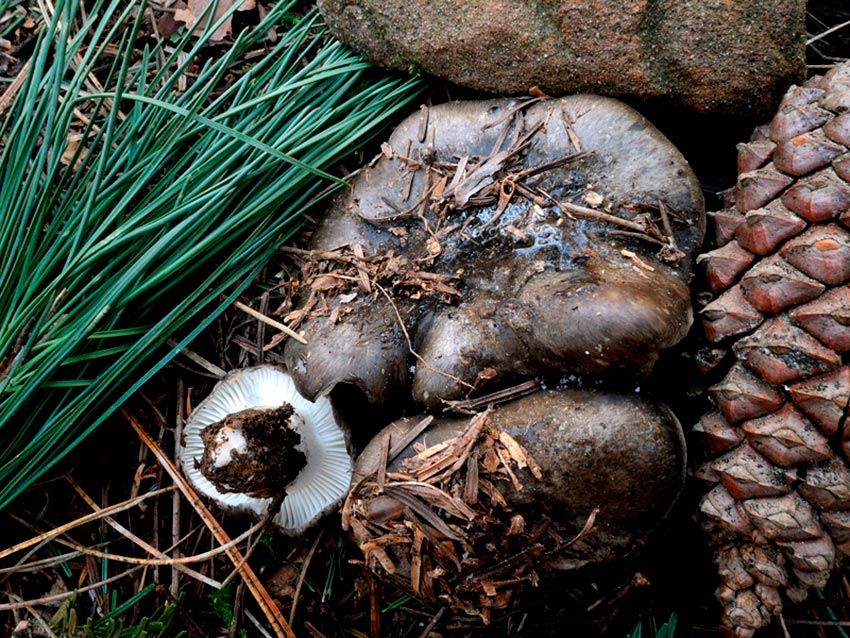
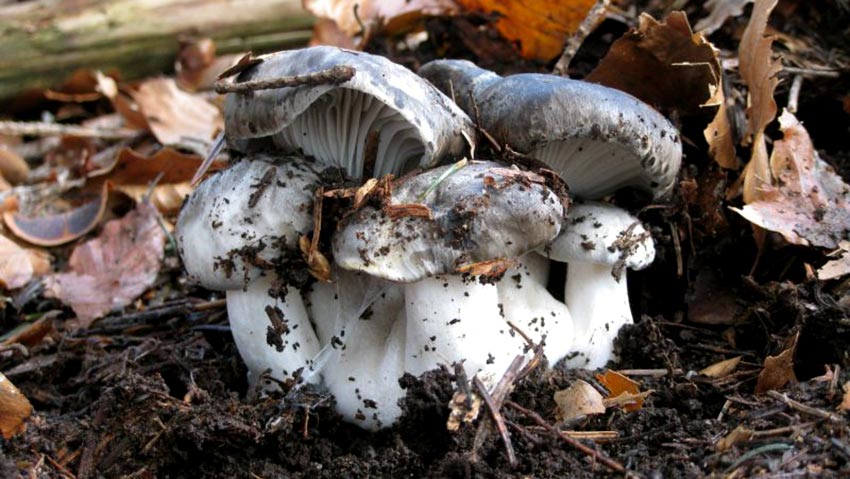
Te pueden interesar